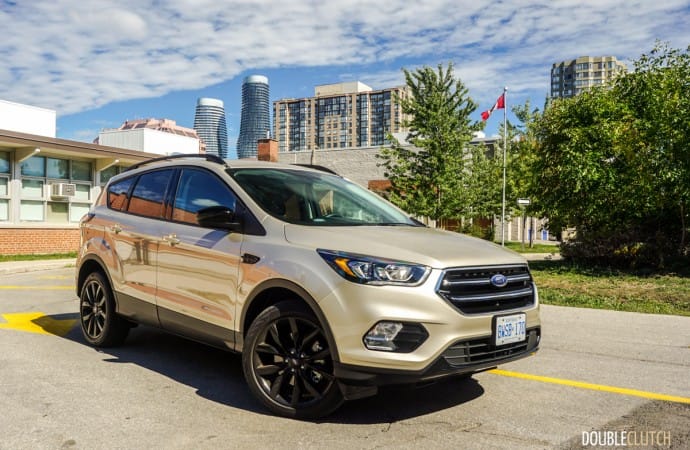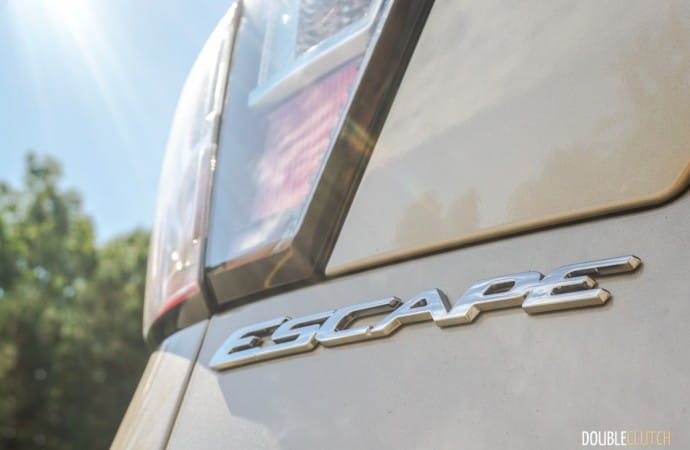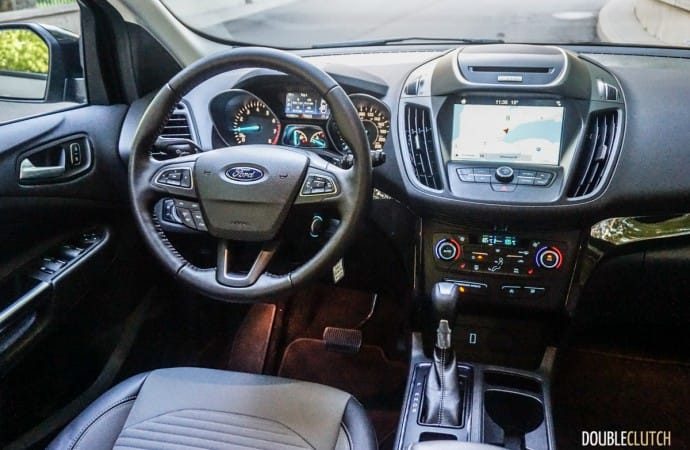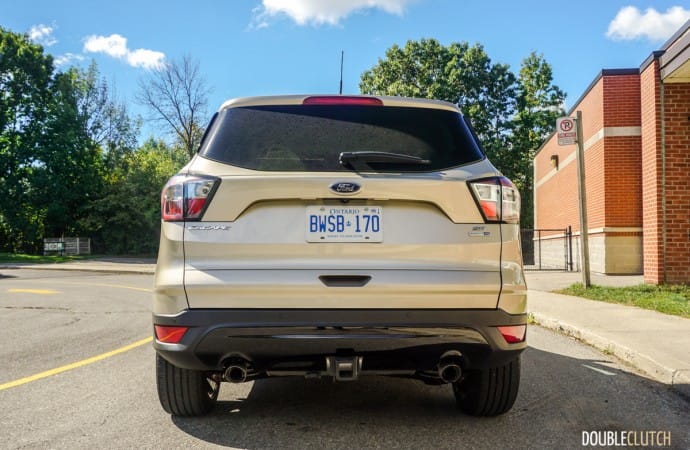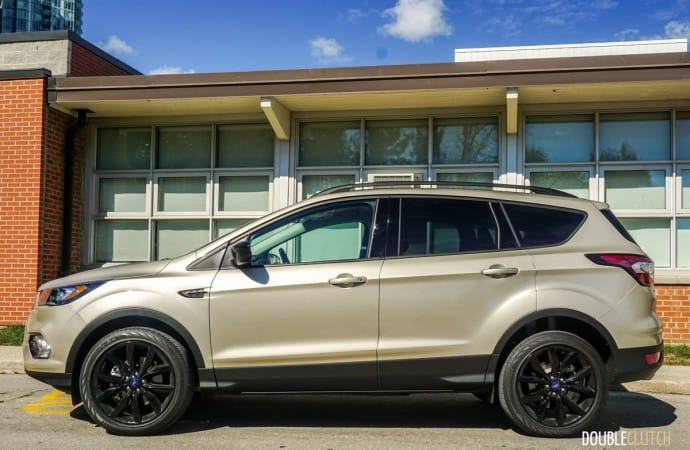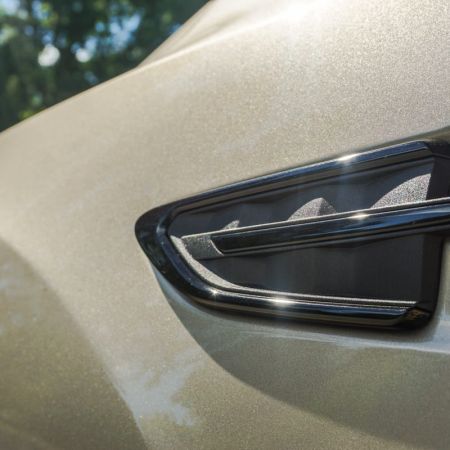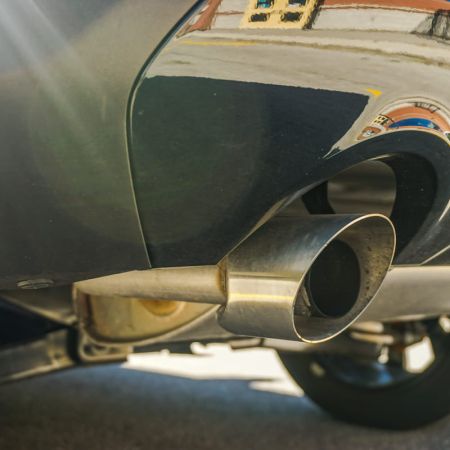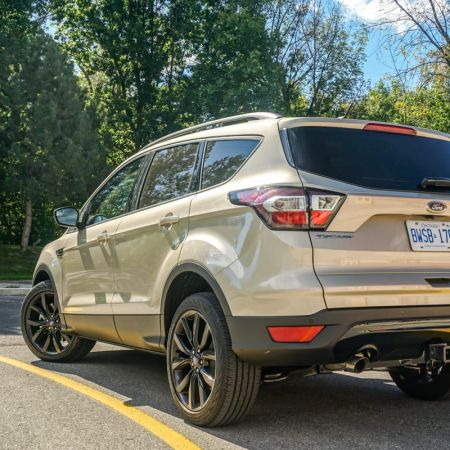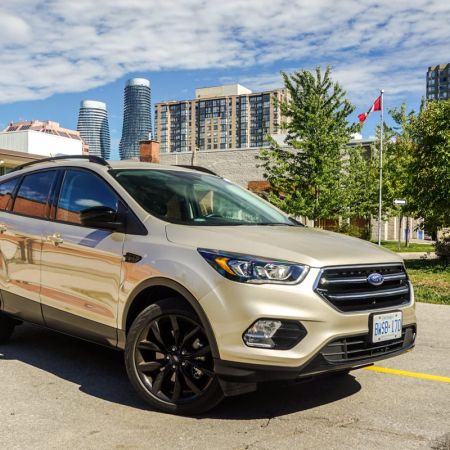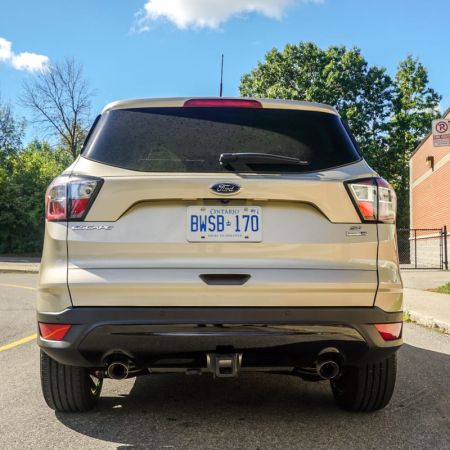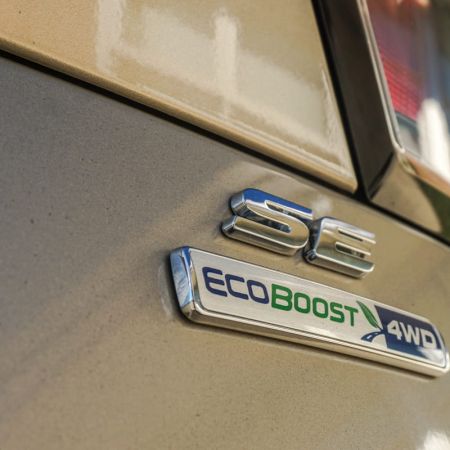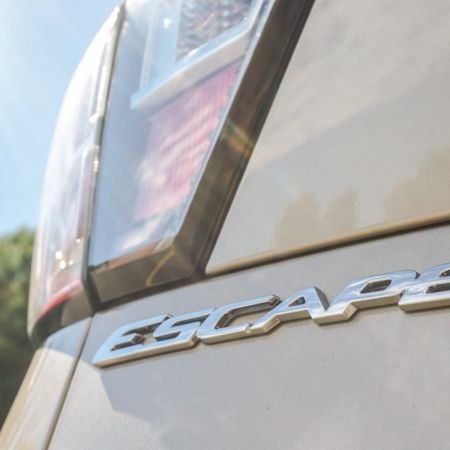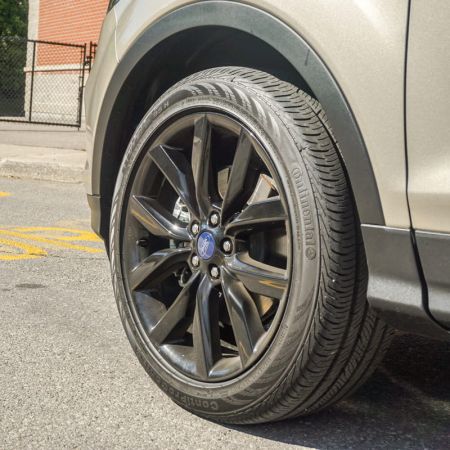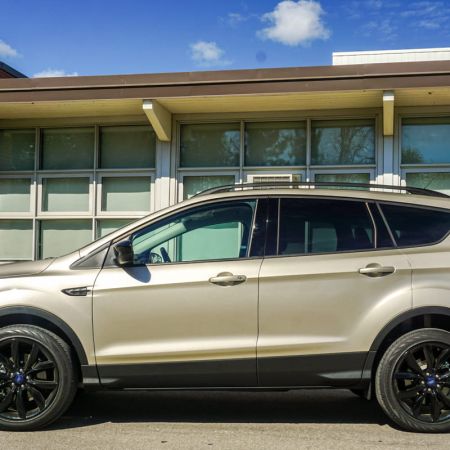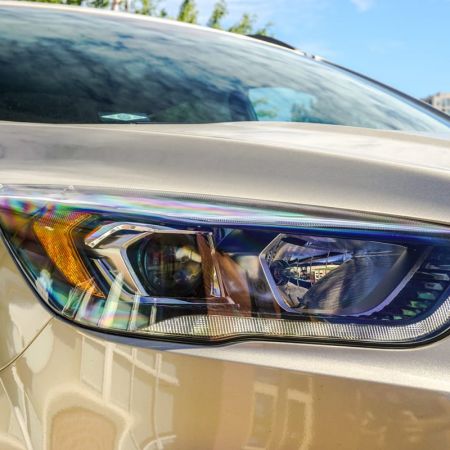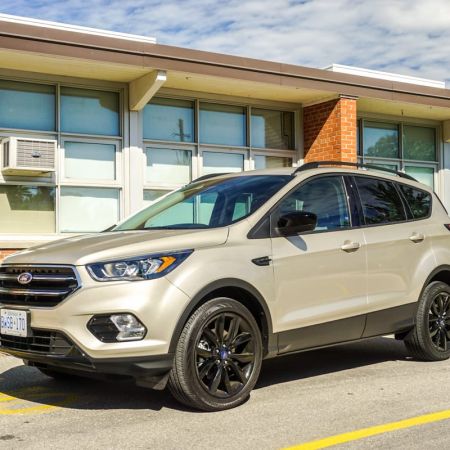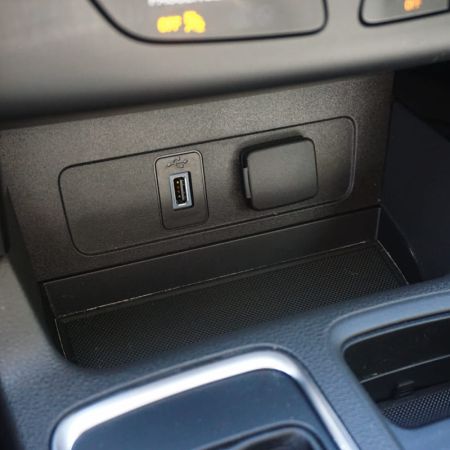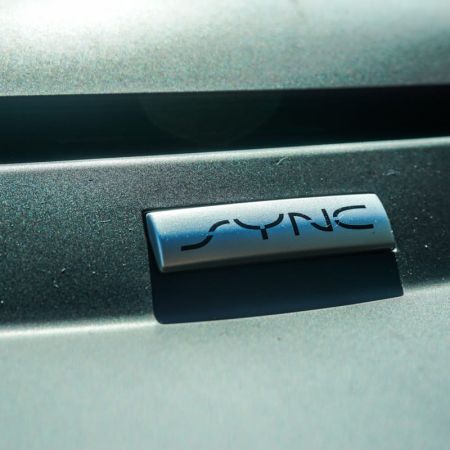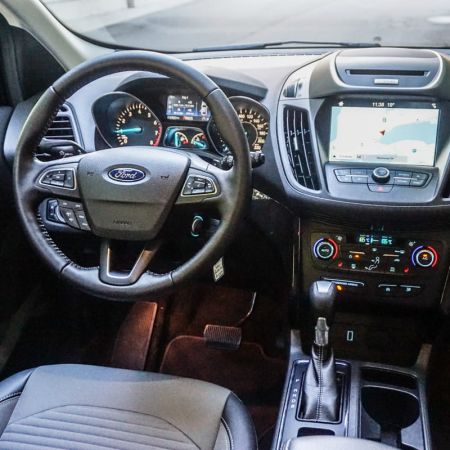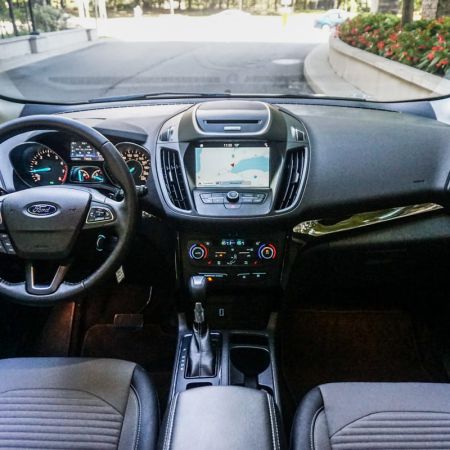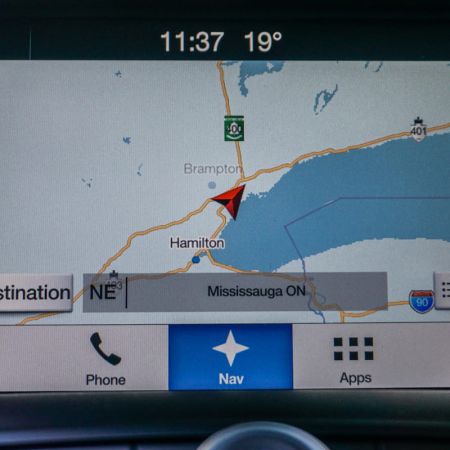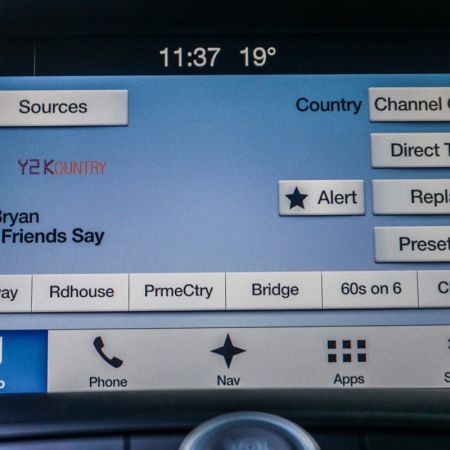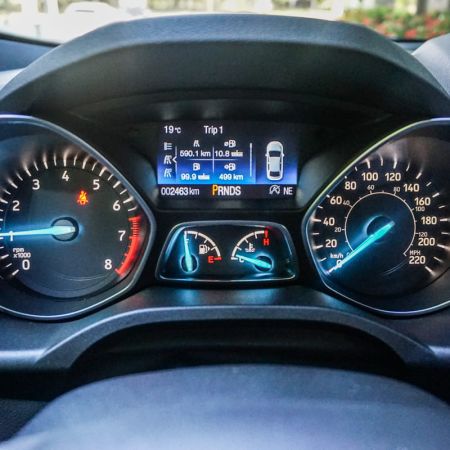The Ford Escape has been one of the hottest sellers on Ford’s roster for some time now, and undoubtedly an important part of their corporate strategy. The Escape was first sold in Canada in 2001 as a front-wheel-drive or four-wheel drive compact SUV, and was an immediate success. Ford was way ahead of the more recent CUV craze, and really owned the market, at least on the domestic side, for a few years. I’d credit the its initial success partially to the familiar truck-like styling of the first and second generations. The earlier Ford Escapes drove like their larger SUV stablemates, only with better fuel economy and increased.
For the 2013 model year, Ford released a major redesign to the North American Escape, which was designed alongside its European counterpart, the Kuga. This generation brought the Escape up to date with a much more streamlined and car-like style to reflect where the CUV market was heading. This car has posted the highest sales numbers yet, so to keep the momentum up, the Escape went under the knife again for a significant facelift for 2017. I got myself one for a week to see what improvements have been made, and how it stacks up against the hordes of very good competitors in market.
The easiest way to spot the 2017 Ford Escape SE EcoBoost on the road is the new fascia, which features a taller, more vertical grill, flanked by headlights that have been squared off a little more than the outgoing model. It’s a similar story out back with a new rear end, featuring two prominent exhaust outlets and restyled LED tail lamps. My particular Ford Escape SE AWD test vehicle came equipped with the Sport Appearance Package, which adds a unique style by blacking out all of the trim, including the headlight housing and a smoked look for the tail lights.
This $1550 package also includes LED daytime running lights, a great looking set of 19” glass black wheels, partial leather sport seats and a leather-wrapped steering wheel. It does a good job setting the Escape apart from the others on the road, and that alone might be worth the extra cost, since these things are not exactly uncommon. Oddly though, my tester came finished in what Ford calls “White Gold”. It’s a good name, but it’s really just plain old beige metallic. The color really made the black accents stand out, maybe a little too much, and I think if I was ordering this CUV I’d probably opt for all black for a clean monotone look.
The interior of the Escape has been refreshed with a new centre console, which now offers a bit of very usable storage – well done Ford. The centre stack has also been reworked and I found the new controls well placed and easy to understand. My test vehicle came equipped with the SYNC 3 infotainment system, but I appreciate the fact there are traditional style audio controls on the centre stack, as well as on the new 3-spoke steering wheel. SYNC 3 looks good and runs well with no noticeable lag, and a nice LCD screen built into the gauge cluster displays all the drive stats you might want to see. The rest of the dash is made mostly of a soft-touch rubberized plastic. There are some areas where it’s obvious that cost has been a priority; the headliner and overhead sunglass storage feel cheap and flimsy, as do the interior door handles.
The partial leather sport seats, which are essentially a nice set of cloth seats with a little strip of leather on the bolsters, are reasonably comfortable. I did find the legroom up front a little tight, which is not usually something I notice. Like the Focus (reviewed here), the front footwells are rather small The rear seat will easily handle two adults, and the cargo area is large and exactly what you’d expect from a CUV of this size. For larger cargo, the split rear bench does fold flat to free up more space.
One of the biggest improvements, for me at least, is the interior sound proofing. Ford has clearly put a lot of effort into maintaining a relaxing and quiet cabin, and the Escape’s interior now achieves levels of silence that are only matched by much pricier luxury cars and CUVs. Even the side windows are now dual pane glass to help cut out external noise, a feature not commonly found on crossovers at this price point.
The Escape now offers three engines, starting with the base 2.5L four-cylinder. Optional is a fuel-sipping 1.5L EcoBoost, and the sportier 2.0L EcoBoost. My test vehicle, which is an SE AWD model, came with the optional 2.0L, rated for 245 horsepower and 275 lb-ft of torque. That actually sounds like a lot of power, especially when compared to the 177 horsepower offered by the 1.5L; and the 2.0L is only a $1000 option.
That said, while the Escape does feel quite peppy at low speeds in the city, it seems to run out of gusto rather quickly at highway speeds. It’s possible that the six-speed automatic isn’t making the best use of the power, or that the additional weight of the AWD system is working to limit the Escape’s straight line speed. Either way, the Escape’s 2.0L EcoBoost is better than adequate, but not exactly the fun powerhouse I was hoping for.
The rest of the driving experience is fine. The steering is responsive, even though it transfers little feedback to the driver. The Escape also tracks well, rides well and has a nice tight turning radius which makes city parking a breeze. Highway cruising feels good, thanks to the improved sound proofing and stable sense of control, making the Escape a good long-haul family vehicle. Visibility from the elevated driving position is great through the huge windshield too.
My time with the Escape was spent mostly in rush hour commuter traffic, both on the highway and in the city. This netted me an average of 10.7L/100km, a fairly good number for a decently sized AWD CUV, but it’s also not a number that got me terribly excited as its in-line or even slightly worse than competitors like the Toyota RAV4 and Mazda CX-5 (reviewed here).
The as-tested price of my Escape is a rather pricey $35,799, and at that price it’s still missing a sunroof, heated steering wheel and full leather interior. That originally caught me by surprise, but doing some research shows that this particular tester vehicle is spec’d in a strange way. It’s a mid-range SE AWD model, which starts at $29,799, with a long list of optional add-ons like the SYNC 3 convenience package, the bigger 2.0L EcoBoost engine, the Sport Appearance Package, and power liftg ate. It would actually be cheaper to buy a top-trim Titanium model, at $34,749.
Things have changed a lot since Ford first brought the Escape to market, but even in today’s hyper-competitive market, it still hits on all the right traits. The 2017 Ford Escape SE EcoBoost is handsome, comfortable, quiet, and versatile. It has evolved with the market, and this latest model reflects what buyers are looking for in a small crossover. Yet again, Ford is succeeding by building what buyers are looking for.

